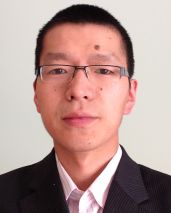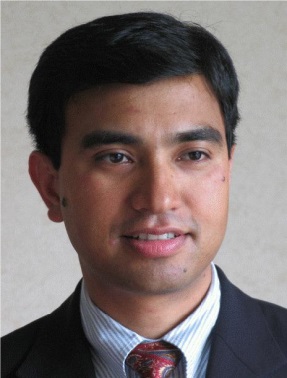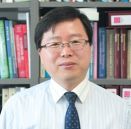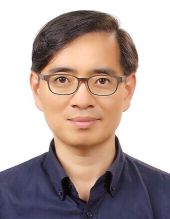S-1
9:00 am -1:00 pm |
 
Yajie Dong Xiao Wei Sun
Univ. of Central Florida Southern University of
Science and Technology |
S-1: Fundamentals of Quantum Dots and Their Application to Displays |
The quantum dots (QDs) reviewed in this short course are chemically synthesized colloidal QDs. They are semiconducting nanocrystals, also known as artificial atoms. Their size is only a few nanometers, which is close to or smaller than their electron Bohr radius. A strong quantum confinement effect will occur, which is reflected by the fact that the emitted color of the QD is directly dependent on the size of the QD.
After years of research and development, start-of-the-art synthesized QDs are now known for their high quantum yield and narrow emission bandwidth, making them suitable for practical applications for displays, though there is still some development to be done for lighting applications. In this course, we will review the fundamentals of QDs, including their development history, the critical parameters to define QDs (size, composition, [core/shell or alloyed] structures, and shape, etc.), the cadmium (Cd) issue, and the physical properties of QDs (absorption, photoluminescence, quantum yield, bandwidth, blinking issues), etc. We will also introduce the development of applying QDs to displays, which includes photoluminescence (PL) and electroluminescence (EL).
• In PL, we will explain the application of QD as the backlight of an LCD; we will introduce QD Tube, QD enhancement film (QDEF), QD on-chip, and QD color filter applications. We will also discuss the remaining issues in the QD-LCD backlight.
• In EL, we will discuss the device structure and operating mechanism, ways to improve the device performance, degradation issues, etc. We will also describe inkjet printing of the color pixel patterning of the QLED.
Yajie Dong is an assistant professor in the NanoScience Technology Center at the University of Central Florida with a joint appointment in the College of Optics and Photonics and the Department of Materials Science and Engineering. He received his B.S. and M.S. degrees from the Tsinghua University of Beijing, China, and his Ph.D. from Harvard University. Before joining UCF in 2014, he worked as a senior scientist at QD Vision and as a postdoc associate at the Massachusetts Institute of Technology. He is an associate editor of Optics Express and a member of the Emissive Display (EMD) subcommittee of the SID Technical Program Committee.
Xiao Wei Sun presently holds a chair professor position at the Southern University of Science and Technology in Shenzhen, China. He is also the head of the Electrical and Electronic Engineering Department and the acting dean of the College of Engineering. Before joining Southern University of Science and Technology, he was a professor at the Nanyang Technological University in Singapore. Dr. Sun was awarded the Nanyang Award for Research and Innovation in 2009, the 1000 Talent Award by the Chinese Government in 2012, and the Jacques Beaulieu Excellence Research Chair of INRS (Institut national de la recherche scientifique), Quebec, Canada, in 2013. He is an Academician of the Asia-Pacific Academy of Materials. Dr. Sun is a Fellow of several academic societies, including the Optical Society of America (OSA), SPIE, the Society for Information Display (SID), and the Institute of Physics (IoP, UK). He is the founder and president of the Society for Energy Photonics, a non-profit organization promoting photonics technologies to solve energy crisis issues and combat global warming and climate change. In addition, he is an adjunct professor in the Electrical and Electronic Engineering Department of the Hong Kong University of Science and Technology.
|
S-2
9:00 am -1:00 pm |

Achin Bhowmik
CTO & Exec. VP of Engineering
Starkey Hearing Technologies
Fellow, Society for Information Display |
S-2: Fundamentals of Virtual- and Augmented-Reality Technologies |
|
With the rapid advances in real-time 3D sensing, perceptual computing, and immersive display technologies in recent years, a new class of virtual/augmented/mixed/merged reality (VR/AR/MR) devices is increasingly blurring the border between the real and the virtual words. In this short course, we will present a tutorial of these technologies and applications, covering the system-level requirements from psychophysical and human-factors considerations, the advances in 3D motion tracking with visual-inertial sensing techniques, perceptual computing and graphics processing, spatial-light modulation and display technologies, end-to-end system architectures, and state-of-the-art and emerging applications towards achieving life-like immersive and interactive experiences.
Achin Bhowmik is the chief technology officer and executive vice president of engineering at Starkey, which is the largest hearing technology company in the US. Starkey is a privately held medical devices business with more than 5,000 employees and operations in more than 100 countries worldwide. In this role, he is responsible for leading the company’s research and engineering efforts. Prior to joining Starkey, Dr. Bhowmik was vice president and general manager of the Perceptual Computing Group at Intel Corporation. There, he was responsible for R&D, engineering, operations, and businesses in the areas of 3D sensing and interactive computing, computer vision and artificial intelligence, autonomous robots and drones, and immersive virtual and merged reality devices. Previously, he served as the chief of staff of the Personal Computing Group, Intel’s largest business unit.
As an adjunct professor and guest lecturer, Dr. Bhowmik advises graduate research and teaches courses on human-computer interactions and perceptual computing technologies at the University of California, Berkeley, Stanford University, Liquid Crystal Institute of the Kent State University, Kyung Hee University, Seoul, and the Indian Institute of Technology, Gandhinagar. Dr. Bhowmik was elected as a Fellow of the Society for Information Display (SID). He serves on the board of advisors for the Fung Institute for Engineering Leadership at UC Berkeley, the executive board for SID, and the board of directors for OpenCV. He received the Industrial Distinguished Leader Award from the Asia-Pacific Signal and Information Processing Association. He has over 200 publications, including two books and 34 issued patents.
|
S-3
3:00 pm - 7:00 pm |
 
Jang Hyuk Kwon Min Chul Suh
Kyung Hee University Kyung Hee University
|
S-3: Fundamentals of Flexible OLEDs and Manufacturing of Flexible OLEDs |
|
Professor Jang Hyuk Kwon will describe flexible OLED materials and device structures based on the industrial activities aiming for flexible AMOLEDs. The critical aspect of OLED materials, flexible substrates, flexible films, OLED structures, and thin-film encapsulation technologies will be emphasized. We will address the basic principles of flexible AMOLEDs and discuss the current technical status of challenging technologies based on flexible material and device structure viewpoints.
Professor Min Chul Suh will describe how to manufacture flexible AMOLEDs. For example, we will cover various topics related to materials and processes such as flexible substrates, flexible film handling techniques, OLED pixel-forming technology, thin-film encapsulation technology, etc. We will also discuss the current technical status of challenging technologies based on flexible electronics.
Jang Hyuk Kwon is a professor in the Department of Information Display at Kyung Hee University in Seoul, Korea. He received his Ph.D. in 1993 in chemistry at the Korea Advanced Institute of Science and Technology. He started his first job working with display R&D at Samsung SDI. He was an original member of the OLED team at Samsung. He has also been involved in many OLED and AMOLED projects, many of which are slated for future displays. He was especially honored to be the leader in charge of the set-up of OLED device and material technology for manufacturing at Samsung. Since 2009, Samsung has been manufacturing AMOLEDs for mobile applications. At that time, Professor Kwon pioneered works of currently applied top-emission OLED architecture for the Galaxy Samsung AMOLED display. Moving to Kyung Hee University 10 years ago, he also pioneered new OLED technology. He published 100 SCI international journal papers and 17 SID papers, and has given more than 30 invited talks at international conferences. For over a decade, he has been an SID Program Committee member and last year he received a 2017 SID Special Recognition Award.
Min Chul Suh is a professor in the Department of Information Display at Kyung Hee University in Seoul, Korea. Previously, he worked as a group leader in R&D at Samsung SMD and as a technical project leader in R&D at Samsung SDI. He has over 15 years of experience in AMOLED and future display technologies, with an interest in perovskite LEDs, OLEDs, and flexible OLEDs, and has published over 90 research papers.
|
S-4
3:00 pm - 7:00 pm |

John Kymissis
Associate Professor, Columbia University |
S-4: Fundamentals of MicroLED Displays |
MicroLED technologies unlock the potential for LEDs to serve as active-emissive display elements at the pixel level, allowing for development of displays with extraordinary performance, including otherwise unavailable levels of contrast, luminance, and color gamut.
This short course will discuss the basics of LEDs and the strategies that have been developed for monolithic, nanowire, and pick-and-place microLED approaches. Several recently announced products and technical perspectives on the expectations for the impact of microLEDs on direct view, flexible, stretchable, AR, VR, and non-display technologies will also be discussed.
Ioannis (John) Kymissis graduated with his SB, M.Eng., and Ph.D. degrees from MIT. His M.Eng. thesis was performed as a co-op at the IBM TJ Watson Research Lab on organic thin- film transistors, and his Ph.D. was obtained in the Microsystems Technology Lab at MIT, working on field-emission displays. After graduation, he spent three years as a postdoc in MIT’s Laboratory for Organic Optics and Electronics, working on a variety of organic electronic devices, and also as a consulting engineer for QD Vision. He joined the faculty at Columbia University in electrical engineering in 2006 as an assistant professor. Dr. Kymissis has won a number of awards for his work, including the NSF CAREER award, the IEEE EDS Paul Rappaport award, the Vodaphone Americas Foundation Wireless Innovation Award, the MIT Clean Energy Prize, and a Verizon Powerful Answers Award. He recently served a term as the editor-in-chief of the Journal of the Society for Information Display and was the general chair for the 2014 Device Research Conference.
|